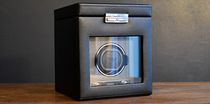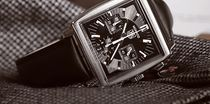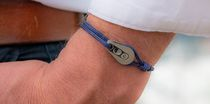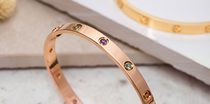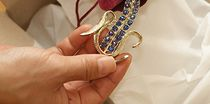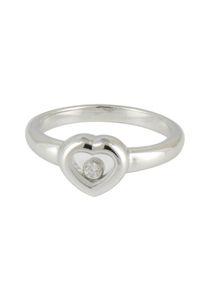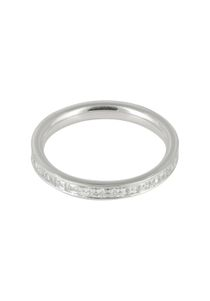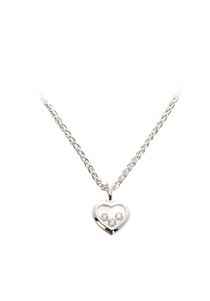Clear all filters
Chopard Jewellery collection
Découvrez nos 2 jewellery chopard. Tous les meilleurs modèles au meilleur prix, à acheter ou à rechercher.
All our Chopard jewel
CHOPARD
2 items
Chopard: A story of family and Swiss watchmaking
The story of Chopard is primarily one of a high-precision watch manufacturer, founded in 1860 in the Swiss Jura by Louis-Ulysse Chopard. It was in Sonvilier, to be exact, that the young watchmaker created his company, which originally specialised in pocket watches and chronometers. For decades, the village farmers had supplemented their income during the winter months by assembling watches. It was for this reason that Louis-Ulysse Chopard's father, himself a farmer, had urged his son to learn the art of watchmaking. The high-quality handcrafted watches of the House of LUC quickly earned it a solid reputation, both in Switzerland and around the world with customers including Tsar Nicholas II, to name but one. Succeeding his father in 1915, Paul-Louis Chopard moved the family business to Geneva, the international crossroads of business and watchmaking. A third generation then took over with Paul-André Chopard at the helm, but his sons did not wish to continue the adventure. In the early 1960s, Chopard was sold. The buyer was not the first to come along, far from it. But the German goldsmith and jeweller Karl Scheufele III, head of Eszeha, was looking to acquire a Swiss manufacture to not have to depend on movement suppliers. His chose Chopard. It is said that the deal was concluded in 30 minutes as the seller and the buyer got along so well.
From watches to jewellery watches: The birth of Happy Diamonds
The House of Chopard moved once again, this time to Meyrin in the canton of Geneva. With Karl Scheufele III and his wife Karine in charge, the company experienced a period of growth, thanks in particular to the creation of its women's jewellery watches. The Scheufeles, let's not forget, were also jewellers, and inventive ones at that. In 1976, the Happy Diamonds watch, with its mobile diamonds floating happily between two sapphire crystals, shook up the conventions of traditional watchmaking. Chopard's inventiveness was once again on full display with the launch of the Saint-Moritz steel sports watch. The company was just as dynamic on the commercial front, with boutiques opening everywhere from Geneva to Hong Kong. The two heirs of the Scheufele family, Caroline and Karl-Friedrich, have been at the head of Chopard since the early 1980s and continue to pursue the company's international ambitions to this day. With Caroline Scheufele, Chopard also entered the world of jewellery with all guns blazing.
Chopard on the red carpet: The birth of jewellery collections
It's an entirely yellow gold and diamond clown, with a belly full of moving gems, that sets the tone. Happy Clown, designed by Caroline Scheufele, became the House's mascot and established the brand in the jewellery sector. It took just a decade for Chopard to make its mark, with collections such as Cašmir and Pushkin, which combined gold, precious stones, gemstones and polished diamonds, inspired by the curves of Russian Orthodox churches. 1998 marked a new chapter for Chopard as Caroline Scheufele was chosen by the president of the Festival de Cannes to redesign the famous palm. Now an official partner of the world's biggest film event, the House adorns all the greatest actors in its fine jewellery pieces. In 2007, Chopard's first fine jewellery collection was, in fact, dedicated to the Cannes Film Festival: it was named "Red Carpet". This was followed three years later by another collection, "Animal World", which, accompanied by a collection of fine watches (the House also continues to distinguish itself in this sector), celebrated Chopard's 150th anniversary.
Chopard: Joyful, engaging jewellery
The clown as a mascot, diamonds that dance freely and the Ice Cube collection with its colourful,geometric designs all firmly place Chopard jewellery in the niche of "joie de vivre". The House's creations are intended to not just radiate positive energy, but also to carry a sense of goodwill and generosity. "Recognising the intrinsic value of ourselves and others," writes the Swiss company on its website, "is symbolised by the Heart, Chopard's iconic motif that brings the Happy Hearts collection to life and represents the House's philanthropic commitments. The collection of Happy Hearts rings, bracelets, earrings and pendants, not to mention watches, effectively combines the House's two signature designs: colourful hearts and moving diamonds. It also demonstrates the degree of Chopard's commitment, supporting non-profit organisations by donating a percentage of sales of special editions, and also in sustainable development. Indeed, the Swiss House has long been committed to sustainable luxury, including its Le Voyage programme and the Green Carpet fine jewellery collection launched in 2013 to promote Fairmined-certified gold and diamonds from responsible suppliers among other initiatives.

